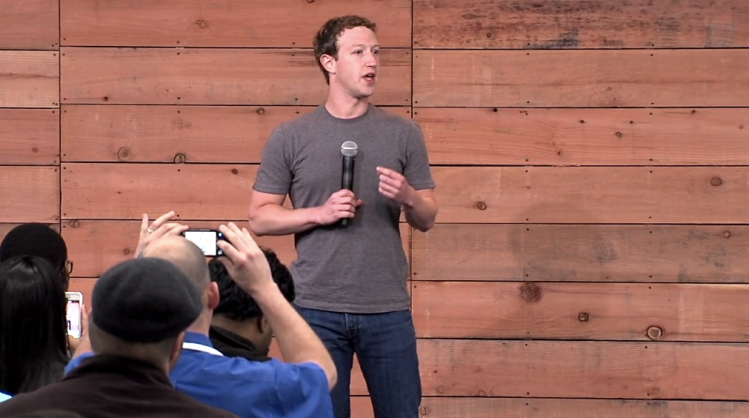Few topics in technology garner as much attention and debate as the implementation of artificial intelligence. While we love technology and the things we can do with it, there always seems to be a creepy factor associated with our technology learning about us and acting independently to make decisions. Maybe too many people watched Terminator, but more likely, we just don’t understand what companies do with AI and how it may affect our lives.
As with most things, the fantasy is more overblown than the reality. Despite Elon Musk’s warnings of AI robots destroying humanity, we remain safe. And although Mark Zuckerberg built and developed his own AI personal assistant, most of us still don’t have robot butlers.
In short, AI is a neutral force produced by large cohorts of programmers using open source code to create the next generation of computing technology. But that doesn’t mean AI doesn’t already have a tremendous impact on society in ways both exciting and obscure. Here are some of the interesting ways companies are already bringing AI to the masses.
1. Facebook identifies users suffering from depression
With people sharing so much personal information on Facebook, the company decided to use it for good. Facebook deploys AI to scan users’ posts for signs of depression or suicidal thoughts. Facebook doesn’t provide the specific criteria for identifying who is at risk, but the algorithm is believed to search for comments expressing concern or support.
June 5th: The AI Audit in NYC
Join us next week in NYC to engage with top executive leaders, delving into strategies for auditing AI models to ensure fairness, optimal performance, and ethical compliance across diverse organizations. Secure your attendance for this exclusive invite-only event.
Facebook also scans live feeds for videos attracting unusually high attention rates or concerned commenting. The algorithm then hands the content to human moderators who send the user helpful information or, in some cases, contact emergency services. According to The Verge, “In the last month alone, the software had helped Facebook flag cases to first responders more than 100 times.” This service can’t operate in the European Union because of its strict privacy laws, and it’s only in the testing phase in the U.S., but it’s a tangible expression of the possibilities of AI.
2. Uber creates dynamic pricing models
How much does it cost to take an Uber? That depends on when and where you need a ride. While it’s understood that the ride-hailing industry alters prices based on factors like time of day, location, and duration, Uber takes that concept to a new level with its AI initiative.
Uber implements AI to create a dynamic pricing model based on real-time physical and sociological conditions. For example, according to ZDNet, “Should a customer book a ride from one wealthy area to another … they may be asked to pay more than someone heading to a less affluent area — no matter the distance, mileage, or time necessary to travel.”
This is a bad look for Uber, which is already experiencing a colossal and continual PR nightmare, especially because the increased or inflated fees are not passed along to the drivers.
Uber open-sources its AI programming language so a broad range of experts and engineers can access the code and advance its usefulness. While Uber’s implementation may not represent the most charitable execution of AI, it shows the potential for dynamic interactions with our once-fixed environment.
3. Amazon can help you get dressed
Amazon brings AI to the bedroom with the Amazon Echo Look, a camera-based version of the popular Amazon Echo. Using computer algorithms trained by fashion specialists, the Echo Look sends your wardrobe picture to the cloud for analysis, then makes recommendations based on the data.
Obviously, this isn’t just Amazon showing its altruistic side. In making recommendations, the Echo Look can also recommend wardrobe and accessory purchases that could complete the “look” directly through the device. People love online shopping, but customers are reticent to fully embrace shopping for clothes online. Consumers care about the intangible aspects of their clothing like fit and feel, and those things can be extremely difficult to determine online. However, the Echo Look could “know everything about you, especially your size and your preferences,” writes Jon Markman for Forbes.
4. Microsoft improves the customer service experience
AI assists Microsoft’s popular Office suite in creating a more dynamic customer service experience that seems intuitive and natural. For example, Microsoft’s Skype service enables chatbots that respond to customer experience queries or general purpose questions about things like weather or traffic. In addition, Microsoft’s search engine, Bing, uses AI to learn more about a user’s browsing habits to continually refine search results that are most appropriate for each user.
Of course, Microsoft’s AI ambitions are far more significant than these fairly fundamental processes. To help accelerate AI development, Microsoft, Facebook, and Amazon have joined together in an open source programming language. The ONNX-MXNet programming package allows experts from each company — and from outside development communities — to make the most progress as quickly as possible. While many think AI-enabled devices do the work for us, it actually takes a tremendous amount of human ingenuity and raw data to complete these projects, and an open source methodology is the fastest way to create high-functioning AI.
Tangible expressions of AI are already integrated into our daily world and, in many ways, they are making our lives better. And that’s how AI is today: It’s already here, but we’re also just beginning to see what it is truly capable of.
Karel Striegel is a certified Linux systems engineer with a strong background in DevOps. Recently, he cofounded FundRequest, a new blockchain platform built specifically for the funding, claiming, and rewarding of open source contributions.


